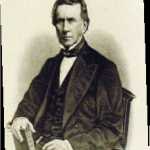
Abraham Browning Photo courtesy of NJ.gov
Why do our license plates say Garden State? Unless you are in law enforcement, it is doubtful that you spend a lot of time thinking about license plates. However, if you are 60 or younger, that slogan has probably been attached to every car you or your family has ever owned. At the time Garden State was added to our license plates in 1955, the term had been in use as an unofficial nickname for well over half a century. The characterization of New Jersey as a garden may not seem right to out-of-towners, but anyone who has spent any time here knows how incredibly productive the soil is in all but a couple of places. In the 1700s and 1800s, New Jersey served as the primary food source for two of the nation’s fastest-growing cities, New York and Philadelphia. Benjamin Franklin likened our state to a barrel of food, open at both ends, nourishing two major populations.
Legend has it that the term Garden State came into wide use after the 1876 Centennial Exposition in Philadelphia. During that event, Abraham Browning, New Jersey’s Attorney General in the years prior to the Civil War, gave a speech in which he described his home state as “an immense barrel filled with good things to eat and open at both ends—with Pennsylvanians grabbing from one end and the New Yorkers from the other.” It was during this speech that he supposedly dubbed New Jersey the Garden State. When the license plate bill was introduced in Trenton in 1954, Governor Robert Meyner decided to investigate the origin of the slogan and determined that at no time had it ever been recognized officially. Focused on promoting the state’s growing reputation as a business-friendly industrial player, Governor Meyner felt the word garden sounded too rural—and actually vetoed the bill! “I do not believe that the average citizen of New Jersey regards his state as more peculiarly identifiable with gardening for farming than any of its other industries or occupations,” he said. The legislature ignored him, overrode the veto, and early the next year the new license plates started arriving at Motor Vehicles.

Photo courtesy of Fabioj
Who came up with the Big Bang theory? If you were hoping to read about Leonard, Sheldon, Howard and Raj, skip to the next teachable moment. This Big Bang happened billions of years ago—and was “discovered” by Arno Penzias and Robert Wilson in 1965. The two radioastronomers, working at Bell Labs in Holmdel, were interested in measuring radio signals coming from space. They were given permission to use a satellite receiver (from an obsolete project called Echo), which was destined for the scrapheap. It just happened to be perfect for their experiments. As soon as Penzias and Wilson began, they noticed a static-y background signal in the microwave range.
Until they eliminated this mysterious noise, they could not continue with their work. The problem was complicated by the fact that, no matter where they pointed the receiver, they heard the same noise. They began ruling out various possibilities. It was not an extra-terrestrial radio signal. It had nothing to do with nearby New York City. An above-ground nuclear test was not the culprit either. It occurred to the scientists that perhaps the pigeons living in the antenna were creating the problem. They shooed them away and then swept out their poop themselves. Next, they turned to the work of others. In 1929, Edwin Hubble had shown that the galaxies we could see from earth seemed to be moving away from us. This suggested that the universe had been compacted at some point.
In England, astrophysicist Stephen Hawking and two colleagues were taking Albert Einstein’s Theory of General Relativity and trying to work backwards to measure time and space. The conclusion they drew was that time and space had a “beginning”—and that all matter and energy originated at that point. Closer by, in Princeton, Robert Dicke theorized that if such an origination point existed, then the residue of the “big bang” that created the universe would be evident in consistent, low-level background radiation anywhere you looked. What Dicke needed was evidence. After four frustrating seasons, Penzias and Wilson began reaching out to their colleagues. They contacted Dicke and presented their dilemma. Of course, he knew exactly what the noise was. Dicke shared his theoretical work, knowing he’d been “scooped.” The three scientists published their findings and in 1978, Penzias and Wilson received the Nobel Prize. One wonders if they could have imagined this outcome more than a decade earlier, while they were sweeping bird droppings off their receiver.
How did our bridges and tunnels get built? New Jerseyans don’t like it a bit when Manhattanites deride them as the “Bridge & Tunnel” crowd. But bridges and tunnels provide vital lifelines for urban dwellers and, lest we forget, they do not build themselves. In the case of the Holland Tunnel to New York and the Ben Franklin Bridge to Philadelphia, credit goes to the vision, political will and—surprise!—unbridled corruption of two of the state’s iconic influence-peddlers: Frank Hague and Enoch “Nucky” Johnson. Hague clawed his way to power in Hudson County beginning in the 1890s, rising from the job of Jersey City constable to ward boss to City Commissioner by 1913. During World War I, Hague filled a power vacuum and seized control of the state’s most populous and richest county.
He was elected Jersey City Mayor in 1917. Johnson, the inspiration for Nucky Thompson in the HBO series Boardwalk Empire, held a number of different official positions in Atlantic City. He ascended to role of political boss in 1911 after his predecessor was jailed. He quickly consolidated this position and held it for three decades. To stimulate business for his town, Johnson made sure that city officials looked the other way when it came to enforcing laws against gambling, prostitution and liquor. When Prohibition kicked in a few years later, Atlantic City became a Mecca of vice and Johnson’s take on this illicit business was hundreds of thousands of dollars a year. Between the two machine bosses, they controlled enough money and manpower in New Jersey to get almost anything done— or make almost anyone disappear. They first joined forces in 1916. Johnson was the campaign manager for Walter Evans Edge, a state senator from Atlantic County who had his eye on the White House.
The first step was to get him to the governor’s mansion. This would be tricky, as Edge was a Republican and Hague was a Democrat who controlled votes in the northern half of the state. Johnson (then 33) met with Hague (then 40) and suggested they forge a partnership that would serve both their ambitions going forward. Hague instructed his organizers to make sure Edge won the Republican primary, and then yanked his support from a stunned Democratic candidate Otto Wittpenn in the general election. With Edge running things in Trenton, Johnson’s power grew. The new governor rewarded him by making him Clerk of the State Supreme Court. He also pushed through laws that gave New Jersey’s cities more autonomy, which helped solidify Johnson and Hague as machine bosses. In 1917, Governor Edge “rewarded” Johnson and Hague by reorganizing the state highway department. This enabled him to authorize the construction of a bridge between South Jersey and Philadelphia (the Ben Franklin Bridge) and a tunnel between Jersey City and Manhattan (the Holland Tunnel).
The bridge opened in 1926 and the tunnel opened in 1927. Both projects transformed the cities that Johnson and Hague controlled. After 30 years, the law finally caught up with Johnson. For years, he had listed enormous amounts of income from gambling, prostitution and kickbacks on his tax return as “other contributions.” The IRS finally nailed him in 1941. Hague fared better during FDR’s administration. Indeed, the lion’s share of federal funds earmarked for New Jersey was put under Hague’s control, conspicuously bypassing the state’s senators or governors. Hague finally resigned as Jersey City Mayor when the new state constitution went in place in 1947.
It was rewritten largely to curtail the influence of local political bosses, and he knew it. Edge went on to enjoy a long and productive national and state political career, but never made it to the White House. He was the fron-trunner for vice president on Warren Harding’s ticket in 1920, but enemies he made with his wheeling and dealing in the Garden State blocked his candidacy, and Calvin Coolidge ended up as Harding’s running mate. Coolidge ascended to the presidency after Harding died in office. Who knows what New Jersey would look like today had Edge been president instead of Coolidge. One can only imagine the extent to which Frank and Nucky might have elevated their power.

Photo Courtesy of Twin Lights Historical Society
Where was the Pledge of Allegiance given for the first time? The Pledge of Allegiance was first published on September 8, 1892, in The Youth’s Companion, a children’s magazine that enjoyed wide circulation across the United States. On April 25, 1893, the Pledge was given for the first time as America’s official national oath of loyalty in a ceremony atop the Navesink Highlands, overlooking Sandy Hook. How the Pledge made this extraordinary journey in less than eight months is a story that is still not covered in most textbooks. The Pledge originated in the offices of The Youth’s Companion in Boston as part of a promotion to celebrate the 400th anniversary of Columbus discovering America.
The publisher’s nephew, James Upham, was in charge of marketing the publication. His goal was to sell flags through advertising that appeared on the magazine’s back pages. Knowing that schools did not typically have flags in their classrooms, he came up with the clever idea of having students recite a pledge of loyalty to the flag at the start of each school day. At a time when patriotism in America was on the rise, this seemed like a sure bet. The writer of the pledge was Francis Bellamy, a local Baptist minister and occasional contributor to the Companion. He may or may not have had editing help, but the final result was I pledge allegiance to my Flag and the Republic for which it stands, one nation indivisible, with liberty and justice for all. An ardent socialist, Bellamy had originally include the words equality and fraternity in the Pledge. It was decided that no one quite knew what fraternity meant (it was an expression held over from the French Revolution), and that equality might offend those who frowned upon the notion than women and African Americans might share in the advantages enjoyed by white males.
The Pledge of Allegiance immediately caught the attention of President Benjamin Harrison, who was running for reelection that fall. Harrison proclaimed that October 12 would now be Columbus Day, and ordered that the Pledge be recited in schools on that morning. It soon became a daily practice in many schools, and at various public events. Harrison ended up losing the election to Grover Cleveland (the nation’s only NJ-born president), but Cleveland continued to carry the ball on the Pledge. As the April 1893 opening of the Colombian Exposition in Chicago approached (it was a year late because of construction delays), it became clear to Cleveland and others in his administration that a “mirror event” somewhere on the East Coast would be necessary. A Newark businessman named William McDowell entered the picture at this time. On his various return trips from Europe via steamship, McDowell noted that the greatest commotion on board was not when the incoming immigrants passed that new statue, Liberty Enlightening the World, but upon the first sighting of the coastline. The first piece of America immigrants saw rising over the horizon on their way into New York Harbor was the Navesink Light Station, better know as the Twin Lights. McDowell believed there should be a flag atop the highlands, between the two lights, that was double their height.
Having already secured funds to erect this 135- foot Liberty Pole, he joined forces with The Youth’s Companion and government officials to hold a ceremony to make the Pledge of Allegiance “official” at the same time the Chicago World’s Fair was opening. On April 25th, several hundred local and national dignitaries gathered on a hastily constructed grandstand to witness the dedication of the Liberty Pole at the Twin Lights. It was a miserable, drizzly morning punctuated by several speeches and flag raisings. The Pledge of Allegiance was given for the first time as the official oath of loyalty. A flotilla of international warships fired salutes as it made its way north toward Sandy Hook. The following day, the ships were assembled for a naval review in New York Harbor, followed by parades and a couple of days of social events. Because Cleveland chose to bypass the flag-raising (he managed to make the parties in New York) and because almost every reporter of note in America was in Chicago to cover the Colombian Exposition, the day the Pledge became official never made it into the history books. The wording has changed a couple of times in the last 120 years, and the way we salute the flag has, too. One thing, however, remains the same—the Pledge of Allegiance is the symbolic final threshold every new American must cross before he or she becomes a U.S. citizen.

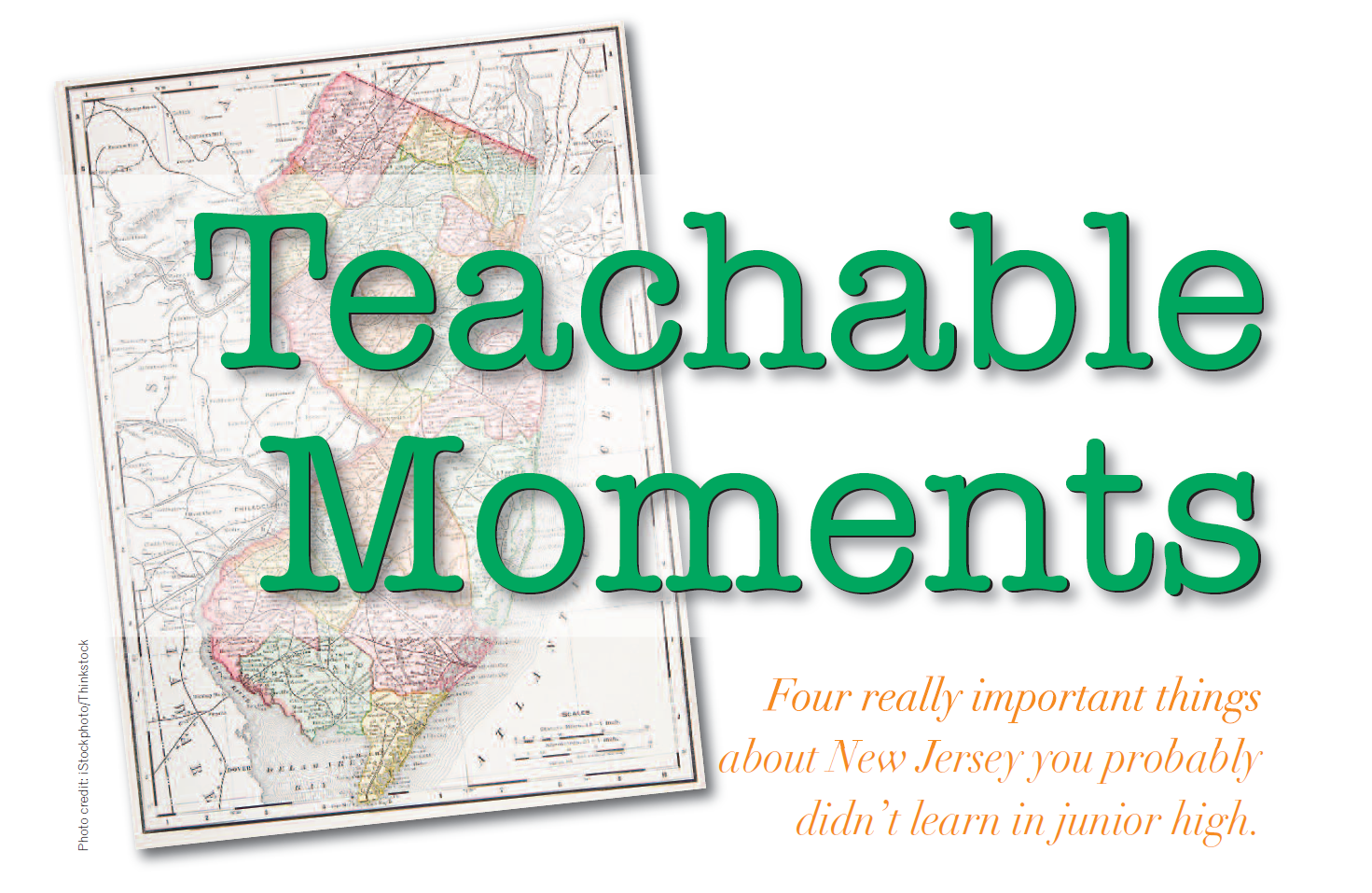
 Here come the choppers. Swirling into Mogadishu. Smoke, dust and sand fill the screen. Swarms of half-naked kids race past adobe buildings that explode into flames and deadly debris. Somalia never looked more hellish. The American Rangers never looked more battle-ready. It’s Blackhawk Down—based, of course, on actual events and directed by Ridley Scott, who is mighty pleased with his blockbuster film. Dramatically a winner, financially a dreamboat that, reportedly, earned its investors “ten bucks on the dime.” And filmed On Location. Switch to Lebanon’s land-mined desert. Leonardo DiCaprio, hands aloft in surrender, must outfox both the ill-advised CIA as well as the local terrorists.
Here come the choppers. Swirling into Mogadishu. Smoke, dust and sand fill the screen. Swarms of half-naked kids race past adobe buildings that explode into flames and deadly debris. Somalia never looked more hellish. The American Rangers never looked more battle-ready. It’s Blackhawk Down—based, of course, on actual events and directed by Ridley Scott, who is mighty pleased with his blockbuster film. Dramatically a winner, financially a dreamboat that, reportedly, earned its investors “ten bucks on the dime.” And filmed On Location. Switch to Lebanon’s land-mined desert. Leonardo DiCaprio, hands aloft in surrender, must outfox both the ill-advised CIA as well as the local terrorists.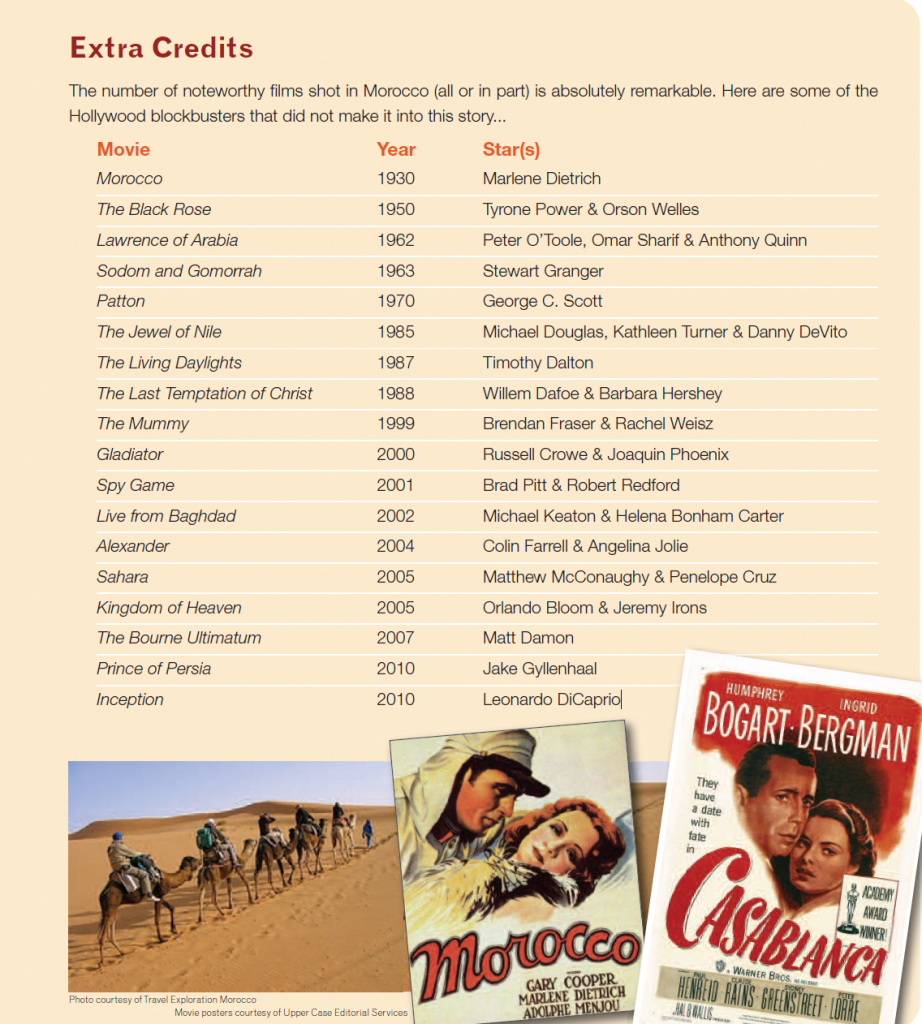



 Turso’s menu reflects what’s grown by Dreyer and his farm crew. The menu descriptions, while referring to the origins of ingredients such as Barnegat scallops and “local” oysters, all but ignored this extraordinary plus. For instance, Liberty Hall beet salad, with its richly colored baby carrots, nibs of honeyed walnuts and sparks of sharp Valley Shepherd cheese, was a rousing harbinger of autumn on this latesummer night. Yet nowhere is it explained that Liberty Hall is both the name of one of Kean’s campuses and a history museum, originally the elegant home of New Jersey’s first governor. (You’d think an education would be part of the dining package.) We had to ask about almost everything, and waits between questions and answers often were long. On the other hand, Turso’s focused, uncomplicated food doesn’t need a promotional boost. Slice into the smoked swordfish, smartly partnered with shavings of crunchy fennel and perky pea tendrils, and you’ll quickly be distracted from service flaws by flavor rhythms of the rich fish as it intersects with a smack of anise from the fennel and the engaging rawness of the shoots.
Turso’s menu reflects what’s grown by Dreyer and his farm crew. The menu descriptions, while referring to the origins of ingredients such as Barnegat scallops and “local” oysters, all but ignored this extraordinary plus. For instance, Liberty Hall beet salad, with its richly colored baby carrots, nibs of honeyed walnuts and sparks of sharp Valley Shepherd cheese, was a rousing harbinger of autumn on this latesummer night. Yet nowhere is it explained that Liberty Hall is both the name of one of Kean’s campuses and a history museum, originally the elegant home of New Jersey’s first governor. (You’d think an education would be part of the dining package.) We had to ask about almost everything, and waits between questions and answers often were long. On the other hand, Turso’s focused, uncomplicated food doesn’t need a promotional boost. Slice into the smoked swordfish, smartly partnered with shavings of crunchy fennel and perky pea tendrils, and you’ll quickly be distracted from service flaws by flavor rhythms of the rich fish as it intersects with a smack of anise from the fennel and the engaging rawness of the shoots.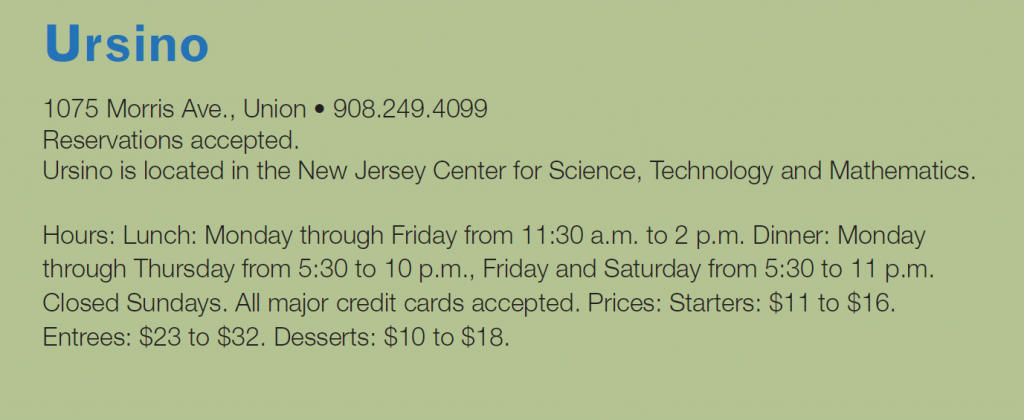

 1776—The first state constitution is drafted and passed in a span of one week to prevent the colony from descending into anarchy after George Washington’s army is routed in New York by the British. It gave unmarried women and African-American men the vote, so long as they owned property, and gave all adults “who are worth fifty pounds proclamation money” the right to vote. William Livingston—a vital leader during the American Revolution—is New Jersey’s hastily elected governor.
1776—The first state constitution is drafted and passed in a span of one week to prevent the colony from descending into anarchy after George Washington’s army is routed in New York by the British. It gave unmarried women and African-American men the vote, so long as they owned property, and gave all adults “who are worth fifty pounds proclamation money” the right to vote. William Livingston—a vital leader during the American Revolution—is New Jersey’s hastily elected governor.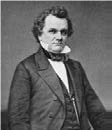 1860—New Jerseyans cast more votes for Stephen Douglas than Abraham Lincoln in the presidential election. Former Governor Rodman Price urges New Jerseyans to join the Confederacy.
1860—New Jerseyans cast more votes for Stephen Douglas than Abraham Lincoln in the presidential election. Former Governor Rodman Price urges New Jerseyans to join the Confederacy.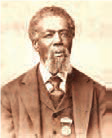
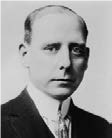 1920—Frank Hague, now Jersey City mayor, passes an ordinance that requires anyone making a public speech in his town to first get clearance from the Police Department, which he controls. Without public opposition, Hague serves as mayor for 30 years (1917– 1947).
1920—Frank Hague, now Jersey City mayor, passes an ordinance that requires anyone making a public speech in his town to first get clearance from the Police Department, which he controls. Without public opposition, Hague serves as mayor for 30 years (1917– 1947).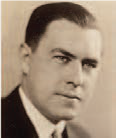 1954—Former governor Harold Hoffman admits in a letter opened after his death that he had embezzled more than $250,000 and was also being blackmailed for $150,000.
1954—Former governor Harold Hoffman admits in a letter opened after his death that he had embezzled more than $250,000 and was also being blackmailed for $150,000.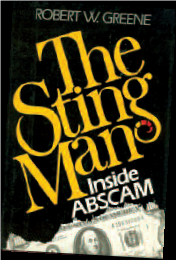 1982—The Senate Committee on Ethics recommends that Senator Harrison Williams be expelled because of his “ethically repugnant” conduct in the ABSCAM sting—an FBI operation aimed at ferreting out corruption in congress. He later becomes the first Senator in 80 years to go to jail.
1982—The Senate Committee on Ethics recommends that Senator Harrison Williams be expelled because of his “ethically repugnant” conduct in the ABSCAM sting—an FBI operation aimed at ferreting out corruption in congress. He later becomes the first Senator in 80 years to go to jail.
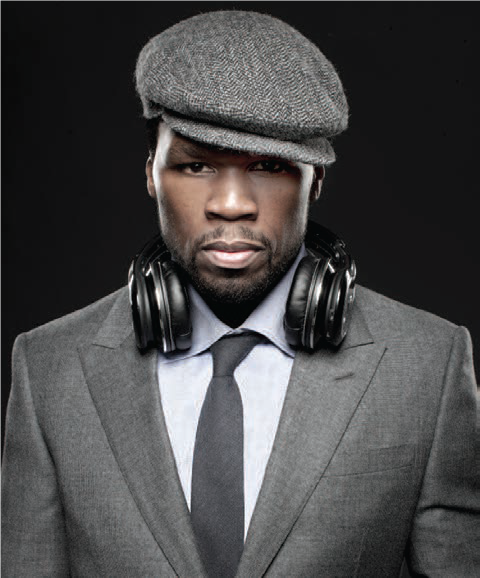 EDGE: Why is diversifying into multiple forms of entertainment so important for you?
EDGE: Why is diversifying into multiple forms of entertainment so important for you? interested in what your legacy is. The people who resonate the strongest are those people who consistently helped others. In terms of what SK Shot does, traveling the last time in Africa it was unbelievable. The numbers are astronomical. You wouldn’t even believe that that many people die from not having something to eat—and meanwhile we choose what we’re gonna eat, and throw away what we’re not.
interested in what your legacy is. The people who resonate the strongest are those people who consistently helped others. In terms of what SK Shot does, traveling the last time in Africa it was unbelievable. The numbers are astronomical. You wouldn’t even believe that that many people die from not having something to eat—and meanwhile we choose what we’re gonna eat, and throw away what we’re not.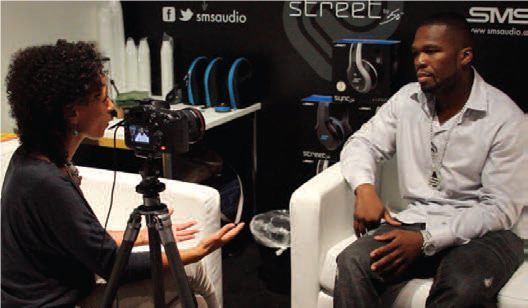 EDGE: Yet, there are tremendous stresses that come with succeeding in your industry—including pressures to stay on top, to make money to remain relevant.
EDGE: Yet, there are tremendous stresses that come with succeeding in your industry—including pressures to stay on top, to make money to remain relevant.

 Don’t Just Sit There! Thanks to a new study out of Australia, you can add one more thing to the list of long-term health no-no’s that includes smoking, drinking, lack of exercise and a high-fat diet: Sitting. Research by the Sax Institute of adults 45 and over found that those who sat for 11 or more hours a day had a 40% higher risk of dying within the next three years than people who sat less than four hours a day. The study adjusted for an array of other lifestyle and medical issues, but even for those who exercised regularly, the risk of death still rose with every additional hour spent in a chair.
Don’t Just Sit There! Thanks to a new study out of Australia, you can add one more thing to the list of long-term health no-no’s that includes smoking, drinking, lack of exercise and a high-fat diet: Sitting. Research by the Sax Institute of adults 45 and over found that those who sat for 11 or more hours a day had a 40% higher risk of dying within the next three years than people who sat less than four hours a day. The study adjusted for an array of other lifestyle and medical issues, but even for those who exercised regularly, the risk of death still rose with every additional hour spent in a chair. New Road Map for Families of Teen Diabetics For many parents, coping day-to-day with their teenagers is the most difficult, aggravating and exhausting phase of the child-rearing process. For parents of teens with Type 1 Diabetes, managing the disease and the young man or woman can prove next to impossible. The Eunice Kennedy Shriver National Institute of Child Health and Human Development recently provided a road map that families should find helpful. Their findings suggest that kids between ages 12 and 15 with Type 1 Diabetes benefitted dramatically from a two-year program (of three to four meetings a year) with parents and a health advisor to discuss shared responsibilities, goals and strategies for solving diabetes management problems that arose. Meeting with a health advisor during regular diabetes clinic visits, researchers reported, helped families better manage the changes that occur as children take on more responsibility for their day-to-day diabetes care.
New Road Map for Families of Teen Diabetics For many parents, coping day-to-day with their teenagers is the most difficult, aggravating and exhausting phase of the child-rearing process. For parents of teens with Type 1 Diabetes, managing the disease and the young man or woman can prove next to impossible. The Eunice Kennedy Shriver National Institute of Child Health and Human Development recently provided a road map that families should find helpful. Their findings suggest that kids between ages 12 and 15 with Type 1 Diabetes benefitted dramatically from a two-year program (of three to four meetings a year) with parents and a health advisor to discuss shared responsibilities, goals and strategies for solving diabetes management problems that arose. Meeting with a health advisor during regular diabetes clinic visits, researchers reported, helped families better manage the changes that occur as children take on more responsibility for their day-to-day diabetes care. Impact of the NYC Soda Ban The announcement of an impending ban in New York City on large, sugary drinks has prompted many people—both inside and outside of the medical profession—to chime in on what, if any, effects this will have on overall health. Obviously, gulping down quarts of soda, energy drinks and sweetened teas a week is not a smart idea. But will shaving a few ounces off this total make a difference? The consensus thus far is that it will—but only a small difference. Obesity is a complex disease, involving a lot of variables. That being said, if the “soda ban” pushes forward the national discussion about the dangers of consuming too much sugar—and overeating in general—it could have a significant impact. Lifestyle changes are often triggered by cultural changes; if the culture of junk-food consumption is altered through publicity and awareness that begins in New York, we may look back on this law as a true game-changer.
Impact of the NYC Soda Ban The announcement of an impending ban in New York City on large, sugary drinks has prompted many people—both inside and outside of the medical profession—to chime in on what, if any, effects this will have on overall health. Obviously, gulping down quarts of soda, energy drinks and sweetened teas a week is not a smart idea. But will shaving a few ounces off this total make a difference? The consensus thus far is that it will—but only a small difference. Obesity is a complex disease, involving a lot of variables. That being said, if the “soda ban” pushes forward the national discussion about the dangers of consuming too much sugar—and overeating in general—it could have a significant impact. Lifestyle changes are often triggered by cultural changes; if the culture of junk-food consumption is altered through publicity and awareness that begins in New York, we may look back on this law as a true game-changer. Genetic Connection to Blindness More than 15 million people around the world suffer from blindness brought on by Primary Angle Closure Glaucoma (PACG). The problem is especially pronounced among Asian populations, which account for about 12 million of these cases. A collaborative international research effort launched in Singapore recently identified three previously unknown genes associated with PACG. The medical community has long suspected the disease to be strongly hereditary, but these findings—published in the journal Nature Genetics—confirm the fact. This opens the door to possibilities of novel treatments, as well as the potential of early identification of people at risk for PACG. “These data are the first critical steps toward a better understanding of the underlying molecular events responsible for this blinding disease,” explains Dr. Janey Wiggs, Professor of Ophthalmology at Harvard Medical School.
Genetic Connection to Blindness More than 15 million people around the world suffer from blindness brought on by Primary Angle Closure Glaucoma (PACG). The problem is especially pronounced among Asian populations, which account for about 12 million of these cases. A collaborative international research effort launched in Singapore recently identified three previously unknown genes associated with PACG. The medical community has long suspected the disease to be strongly hereditary, but these findings—published in the journal Nature Genetics—confirm the fact. This opens the door to possibilities of novel treatments, as well as the potential of early identification of people at risk for PACG. “These data are the first critical steps toward a better understanding of the underlying molecular events responsible for this blinding disease,” explains Dr. Janey Wiggs, Professor of Ophthalmology at Harvard Medical School. New Study on Job Stress When Johnny Paycheck recorded the country hit “Take This Job and Shove It” back in the 1970s, it turns out he was way ahead of his time. Doctors in England recently completed a study that shows workers who feel over-pressured yet powerless run a risk of coronary disease that is 23% greater than those who are content in their work environment. The study covered around 200,000 workers in a wide range of occupations, from civil servants to factory workers. Subjects were asked about the type of work they did, the workload, deadlines and freedom to make decisions.
New Study on Job Stress When Johnny Paycheck recorded the country hit “Take This Job and Shove It” back in the 1970s, it turns out he was way ahead of his time. Doctors in England recently completed a study that shows workers who feel over-pressured yet powerless run a risk of coronary disease that is 23% greater than those who are content in their work environment. The study covered around 200,000 workers in a wide range of occupations, from civil servants to factory workers. Subjects were asked about the type of work they did, the workload, deadlines and freedom to make decisions.



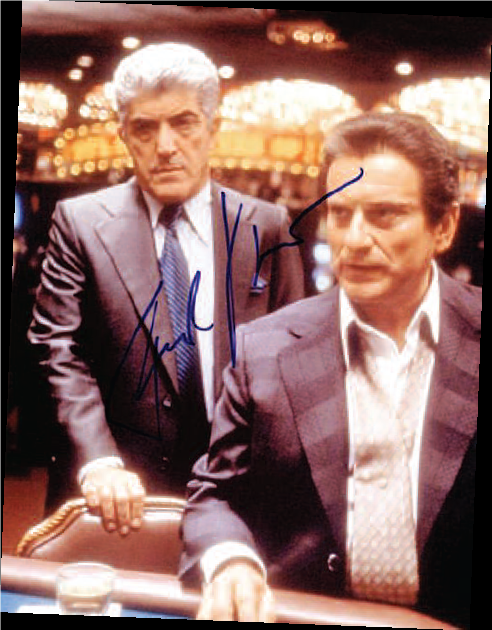
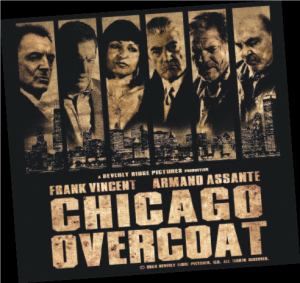 FV: I liked Lou Maranzano in Chicago Overcoat, which we shot in 2007 and was released in 2009. Lou had some interesting issues. Frank Marino in Casino was a good role for me, too, although it wasn’t a great speaking part. People think you have to speak a lot to have a big role but that’s not true. And of course, I enjoyed playing Phil Leotardo in The Sopranos because the writing was so brilliant. The level of discipline on that show was a real eye-opener as an actor. We shot each episode like a movie, on film, but in only 15 days. You could not deviate from the script. To change a single word—an uh or an and—you had to get permission.
FV: I liked Lou Maranzano in Chicago Overcoat, which we shot in 2007 and was released in 2009. Lou had some interesting issues. Frank Marino in Casino was a good role for me, too, although it wasn’t a great speaking part. People think you have to speak a lot to have a big role but that’s not true. And of course, I enjoyed playing Phil Leotardo in The Sopranos because the writing was so brilliant. The level of discipline on that show was a real eye-opener as an actor. We shot each episode like a movie, on film, but in only 15 days. You could not deviate from the script. To change a single word—an uh or an and—you had to get permission.




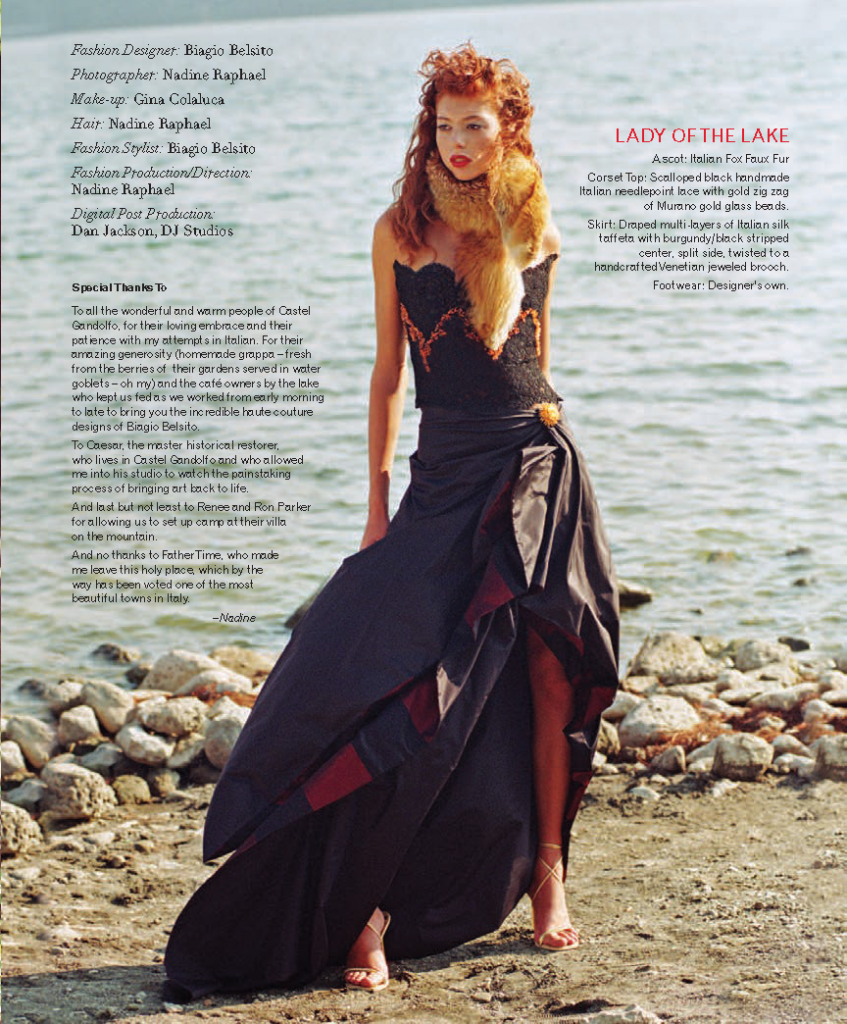

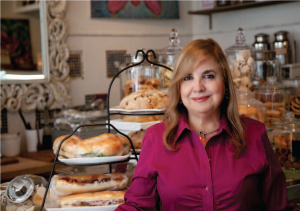
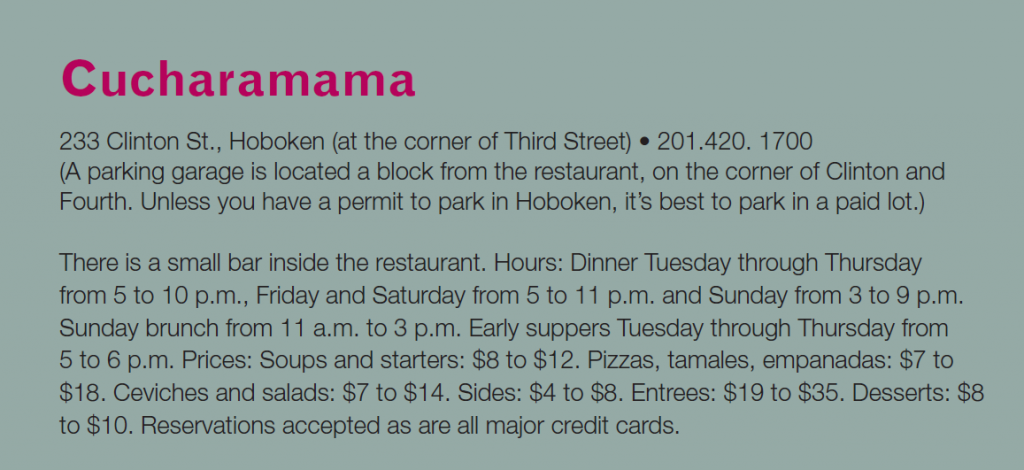
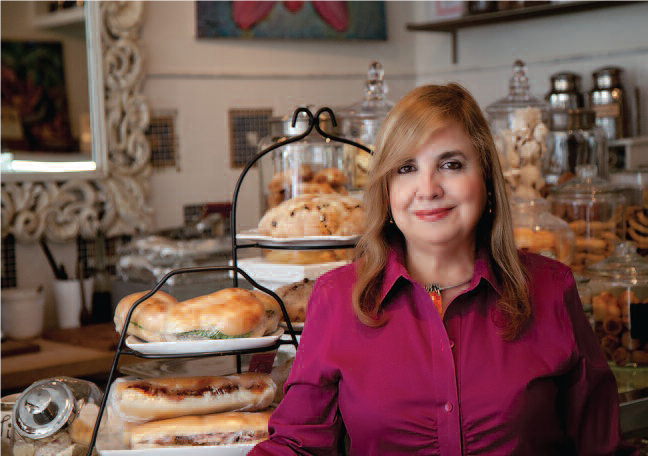

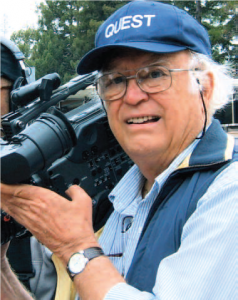
 ctions, a religious film company in Valley Forge, PA. “I told them I didn’t know anything about film,” says Jersey. “They hired me anyway, and I learned how to be an art director. I also realized how little I knew.” So he headed West to graduate film school at the University of Southern California. Graduating in 1956, he dipped his toe in the B-movie drama pool as Art Director of The Blob, Manhunt in the Jungle and 4D Man. But he was primed for documentaries. “There was something about wanting to connect to people in the real world and finding them much more interesting than working with actors with a script,” he says. “If you really care about people, they will know it, and they will open themselves up to you. And that’s what makes a good documentary.”
ctions, a religious film company in Valley Forge, PA. “I told them I didn’t know anything about film,” says Jersey. “They hired me anyway, and I learned how to be an art director. I also realized how little I knew.” So he headed West to graduate film school at the University of Southern California. Graduating in 1956, he dipped his toe in the B-movie drama pool as Art Director of The Blob, Manhunt in the Jungle and 4D Man. But he was primed for documentaries. “There was something about wanting to connect to people in the real world and finding them much more interesting than working with actors with a script,” he says. “If you really care about people, they will know it, and they will open themselves up to you. And that’s what makes a good documentary.”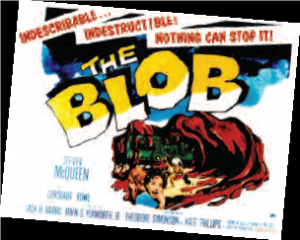 Bill Youngdahl to integrate a large, all white church in Omaha.
Bill Youngdahl to integrate a large, all white church in Omaha. producing and directing independent documentaries on such hot button issues as racism, criminal justice, gang violence, AIDS, Communism and integration. “For me, cinema vérité means letting the truth drive the story,” explains Jersey. “I don’t set out to prove anything— as many documentarians do. The difference between me and others is that I believe in being a participant observer. I explore options with my participants in the belief that our encounters will open them up to seeing more of themselves—not to see themselves as I see them. It’s a tricky business; but in my view, it’s an essential part of being a documentarian.”
producing and directing independent documentaries on such hot button issues as racism, criminal justice, gang violence, AIDS, Communism and integration. “For me, cinema vérité means letting the truth drive the story,” explains Jersey. “I don’t set out to prove anything— as many documentarians do. The difference between me and others is that I believe in being a participant observer. I explore options with my participants in the belief that our encounters will open them up to seeing more of themselves—not to see themselves as I see them. It’s a tricky business; but in my view, it’s an essential part of being a documentarian.”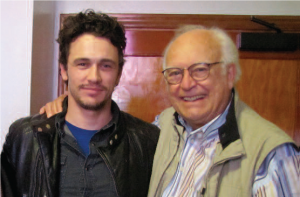 to debuting on PBS as part of the American Masters series. It should come as no surprise that Bill Jersey—father of five and grandfather of five—has no intention of winding down. “On the contrary, I’m winding up!” he says with relish, as he now juggles two careers instead of one.
to debuting on PBS as part of the American Masters series. It should come as no surprise that Bill Jersey—father of five and grandfather of five—has no intention of winding down. “On the contrary, I’m winding up!” he says with relish, as he now juggles two careers instead of one. out in the country where the light is changing. If you’re painting a river, you’re painting something in motion. The light does not sit there for you. That lovely shadow from the rooftop that you love will be gone in 15 minutes. It’s a very alive process.”
out in the country where the light is changing. If you’re painting a river, you’re painting something in motion. The light does not sit there for you. That lovely shadow from the rooftop that you love will be gone in 15 minutes. It’s a very alive process.”






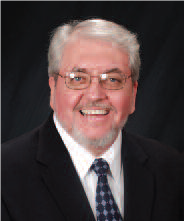 Editor’s Note: Jim Dunleavy is the Director of Physical Therapy and Rehabilitation for Trinitas Regional Medical Center.
Editor’s Note: Jim Dunleavy is the Director of Physical Therapy and Rehabilitation for Trinitas Regional Medical Center.

 academics pondering why attributes such as resilience have dwindled in recent decades. Dr. Richard Weissbourd, a Harvard professor, is also concerned about the priorities of parenting youth in America today. He calls upon parents to reflect upon the emphasis on their children’s happiness, self-esteem and achievement to the extent that these concerns appear to have usurped the importance of more character-driven values. Weissbourd goes on to say that American parents today are so concerned with their children’s achievement and happiness, that they shelter and hover—so much so that they attempt to envelop them in a stifling bubblewrap hug of insulation.
academics pondering why attributes such as resilience have dwindled in recent decades. Dr. Richard Weissbourd, a Harvard professor, is also concerned about the priorities of parenting youth in America today. He calls upon parents to reflect upon the emphasis on their children’s happiness, self-esteem and achievement to the extent that these concerns appear to have usurped the importance of more character-driven values. Weissbourd goes on to say that American parents today are so concerned with their children’s achievement and happiness, that they shelter and hover—so much so that they attempt to envelop them in a stifling bubblewrap hug of insulation.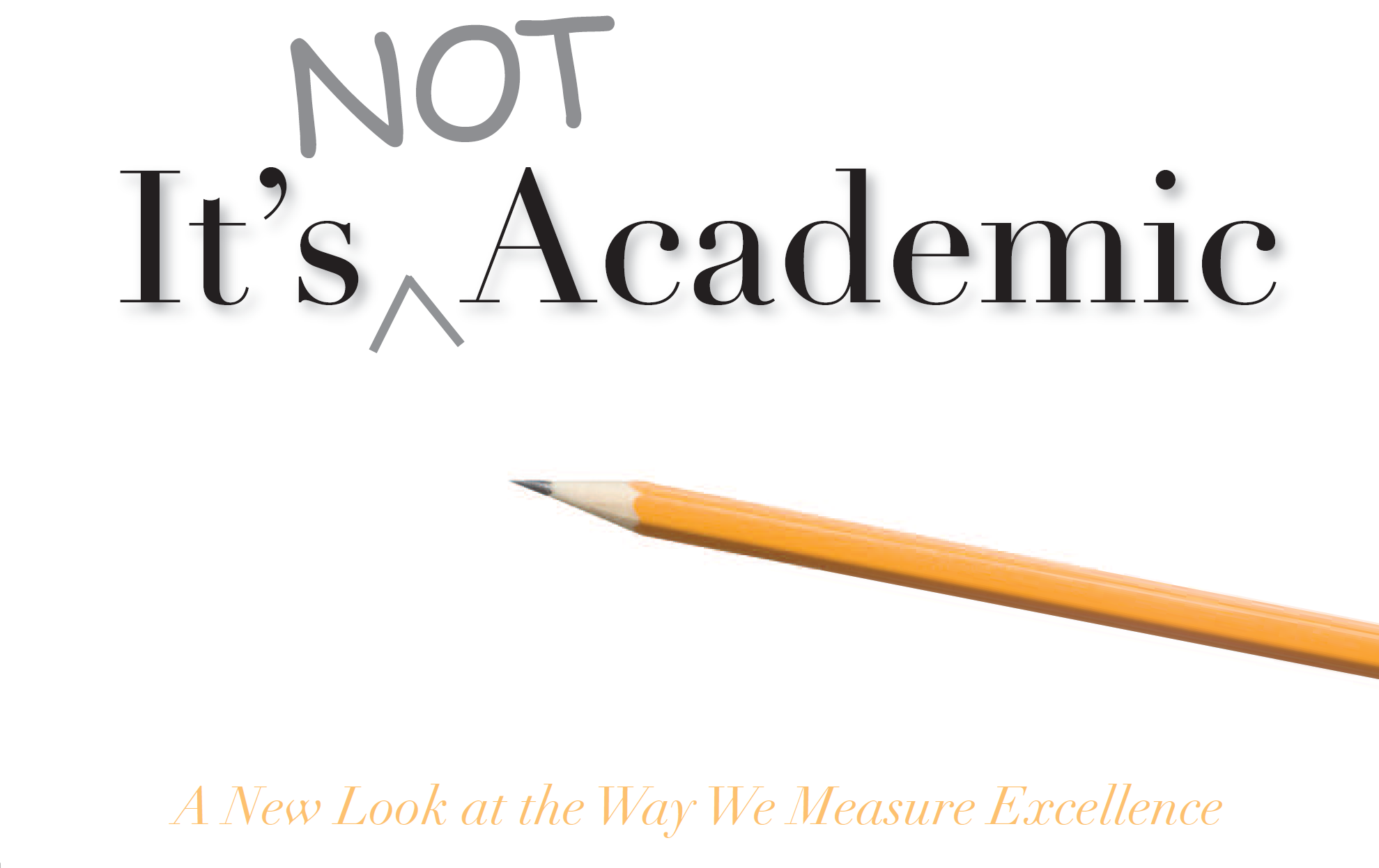
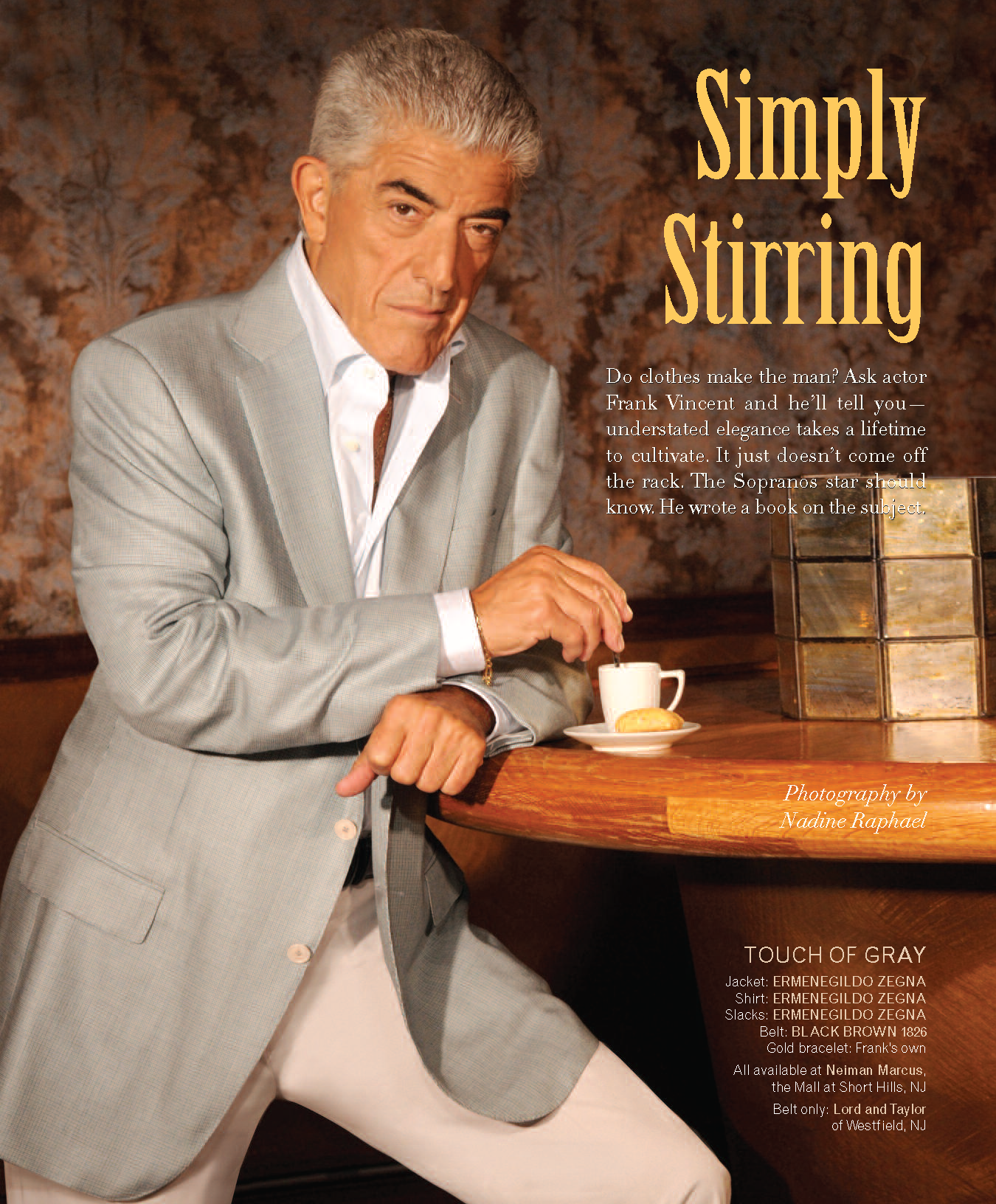

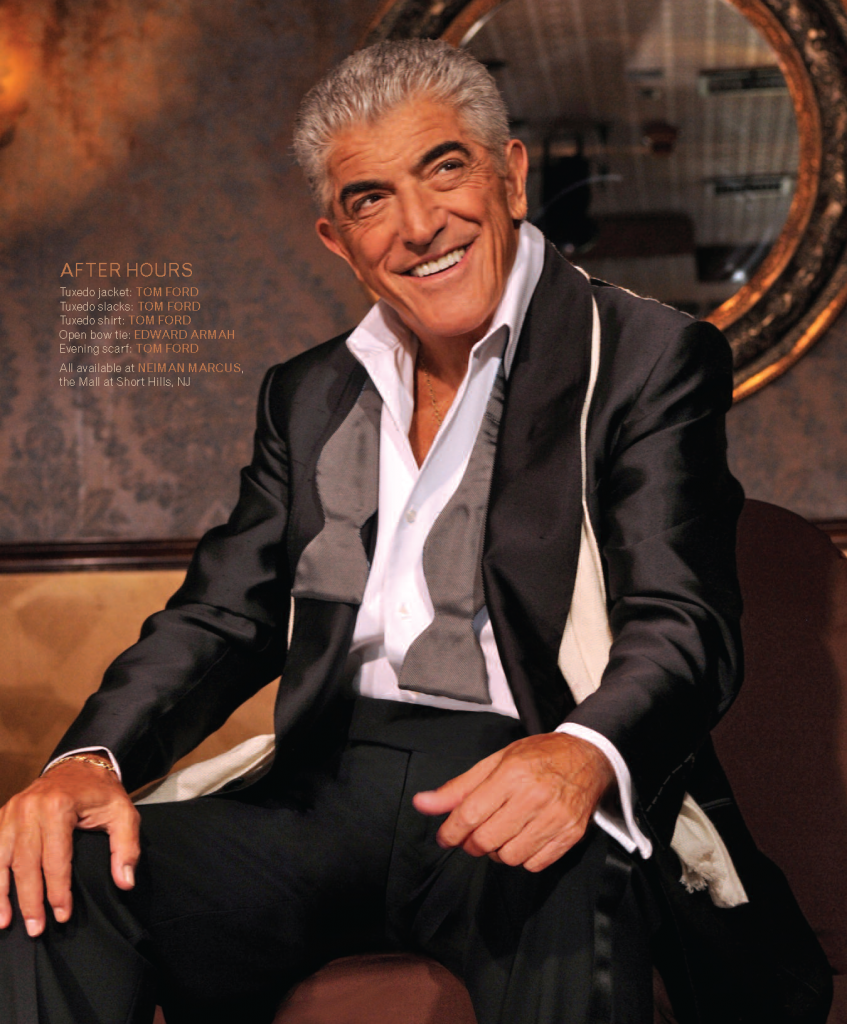


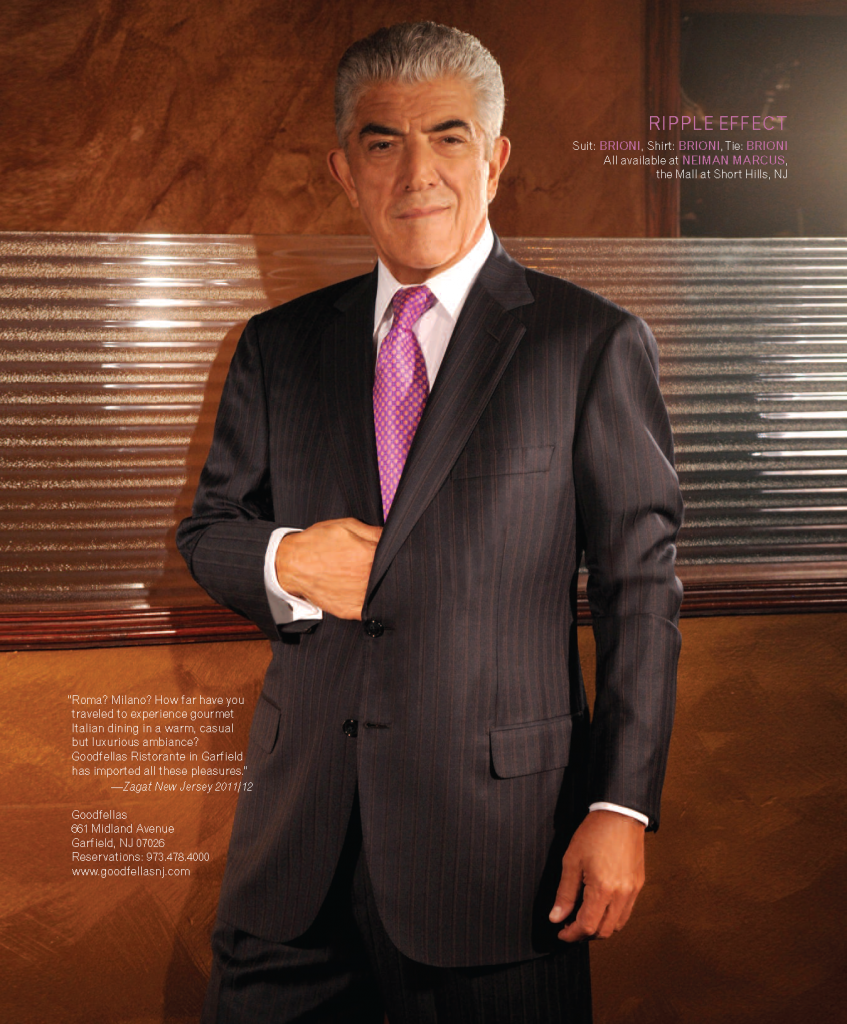



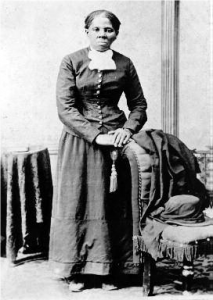
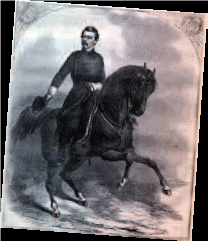
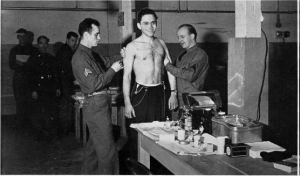


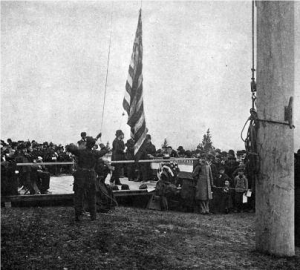
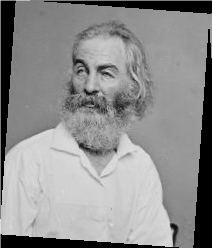



 The Ankle Bone’s Connected to the…What? That broken ankle may lead to bigger problems. So say researchers at Texas Tech, who recently established a link between ankle injuries and life-threatening complications, including deep vein thrombosis and pulmonary embolisms. The study suggested that treating physicians should assess patients with ankle fracture for their risk of developing a venous thromboembolic event on an individual basis, and also provide thromboprophylaxis (prevention of thrombosis) for those with an increased risk of developing such complications.
The Ankle Bone’s Connected to the…What? That broken ankle may lead to bigger problems. So say researchers at Texas Tech, who recently established a link between ankle injuries and life-threatening complications, including deep vein thrombosis and pulmonary embolisms. The study suggested that treating physicians should assess patients with ankle fracture for their risk of developing a venous thromboembolic event on an individual basis, and also provide thromboprophylaxis (prevention of thrombosis) for those with an increased risk of developing such complications. Let’s Do (it at) Lunch As a rule, people don’t mind paying the tab to achieve healthy, beautiful skin. Finding the time to make it happen is often the greater obstacle. According to plastic surgeon Dr. Joseph D. Alkon, there are a number of non-invasive, “lunchtime” treatments that can make your skin look and feel its best. “A chemical peel helps those with dry skin, uneven tone, acne, discoloration and/or mild wrinkles,” Dr. Alkon says. “This office-based procedure uses a special liquid to remove the harsh outer layers of skin, while leaving smoother and healthier layers intact. Peels vary from mild to aggressive depending on the skin being treated.” Microdermabrasion also works to remove unhealthy, dry, flaky outer skin, he adds. This procedure uses a gentle tool or wand to remove the outer layers of skin. This leaves behind fresh, healthy skin. Although commonly performed on the face, other body parts can benefit from both chemical peels and microdermabrasion. “A facial is another popular, relaxing and rejuvenating service,” Dr. Alkon says. “It’s often performed by a licensed esthetician, and includes a skin analysis followed by customized exfoliation, extraction, massage, and application of toners, moisturizers, and sunscreens customized to your skin type. A facial can leave the skin clean, clear, hydrated, and rejuvenated.”
Let’s Do (it at) Lunch As a rule, people don’t mind paying the tab to achieve healthy, beautiful skin. Finding the time to make it happen is often the greater obstacle. According to plastic surgeon Dr. Joseph D. Alkon, there are a number of non-invasive, “lunchtime” treatments that can make your skin look and feel its best. “A chemical peel helps those with dry skin, uneven tone, acne, discoloration and/or mild wrinkles,” Dr. Alkon says. “This office-based procedure uses a special liquid to remove the harsh outer layers of skin, while leaving smoother and healthier layers intact. Peels vary from mild to aggressive depending on the skin being treated.” Microdermabrasion also works to remove unhealthy, dry, flaky outer skin, he adds. This procedure uses a gentle tool or wand to remove the outer layers of skin. This leaves behind fresh, healthy skin. Although commonly performed on the face, other body parts can benefit from both chemical peels and microdermabrasion. “A facial is another popular, relaxing and rejuvenating service,” Dr. Alkon says. “It’s often performed by a licensed esthetician, and includes a skin analysis followed by customized exfoliation, extraction, massage, and application of toners, moisturizers, and sunscreens customized to your skin type. A facial can leave the skin clean, clear, hydrated, and rejuvenated.”  New Alzheimer’s Drug May Be on Horizon The medical profession has accepted the fact that there is no “cure” for Alzheimer’s. However, a trial just concluded found that patients who had injections every two weeks of the drug immunoglobulin—made from antibodies in human blood—showed no decline in cognition, memory, daily functioning or mood for a period of three years. Immunoglobulin is normally given to patients who suffer from an immune deficiency, and is extremely costly. If all goes well, however, the drug would be on the market within 10 years. “This is probably the most exciting drug we know about that is currently in the late stages of research,” says Clive Ballard, Director of Research at the Alzheimer’s Society. “We now know it is safe. But the real test will be whether these initial promising results can subsequently be replicated in larger groups.” As life spans increase, the likelihood that a person over the age of 65 will develop some form of dementia is about one in three. Currently, there are only three drugs for Alzheimer’s in the early to moderate stages, and they are effective in some patients but not in others.
New Alzheimer’s Drug May Be on Horizon The medical profession has accepted the fact that there is no “cure” for Alzheimer’s. However, a trial just concluded found that patients who had injections every two weeks of the drug immunoglobulin—made from antibodies in human blood—showed no decline in cognition, memory, daily functioning or mood for a period of three years. Immunoglobulin is normally given to patients who suffer from an immune deficiency, and is extremely costly. If all goes well, however, the drug would be on the market within 10 years. “This is probably the most exciting drug we know about that is currently in the late stages of research,” says Clive Ballard, Director of Research at the Alzheimer’s Society. “We now know it is safe. But the real test will be whether these initial promising results can subsequently be replicated in larger groups.” As life spans increase, the likelihood that a person over the age of 65 will develop some form of dementia is about one in three. Currently, there are only three drugs for Alzheimer’s in the early to moderate stages, and they are effective in some patients but not in others. Smile and Say “Aaaaaah” Do you experience nausea, bloating, heartburn, constipation, or a feeling of fullness? These may be symptoms of a motility disorder, such as gastroparesis and chronic constipation. Gastropathy is a common condition in long standing diabetic people, especially if not well controlled. People with gastropathy can suffer from postprandial indigestion, abdominal discomfort, nausea, and vomiting. Fortunately, the guesswork has been removed from diagnosis of these conditions thanks to the SmartPill, a wireless motility capsule procedure. “The SmartPill capsule travels through your GI tract, collects data, which is then recorded for your doctor to evaluate,” explains Samiappan Muthusamy M.D. of the Center for Digestive Diseases (cddnj.com), which offers this state-of-the art procedure. According to Dr. Muthusamy, the SmartPill can also diagnose Diffuse Colonic Dysfunction (aka lack of colon motility), an extremely serious condition that can present as constipation. Of course, causes such as a poor diet, lack of fluids, sluggish thyroid, colon cancer and constipating medications are ruled out first. “In modern medicine,” adds Dr. Muthusamy, “living with gastropathy and constipation is a thing of the past. They are treatable.”
Smile and Say “Aaaaaah” Do you experience nausea, bloating, heartburn, constipation, or a feeling of fullness? These may be symptoms of a motility disorder, such as gastroparesis and chronic constipation. Gastropathy is a common condition in long standing diabetic people, especially if not well controlled. People with gastropathy can suffer from postprandial indigestion, abdominal discomfort, nausea, and vomiting. Fortunately, the guesswork has been removed from diagnosis of these conditions thanks to the SmartPill, a wireless motility capsule procedure. “The SmartPill capsule travels through your GI tract, collects data, which is then recorded for your doctor to evaluate,” explains Samiappan Muthusamy M.D. of the Center for Digestive Diseases (cddnj.com), which offers this state-of-the art procedure. According to Dr. Muthusamy, the SmartPill can also diagnose Diffuse Colonic Dysfunction (aka lack of colon motility), an extremely serious condition that can present as constipation. Of course, causes such as a poor diet, lack of fluids, sluggish thyroid, colon cancer and constipating medications are ruled out first. “In modern medicine,” adds Dr. Muthusamy, “living with gastropathy and constipation is a thing of the past. They are treatable.” UGNJ Strikes Gold The Urology Group of New Jersey (UGNJ) recently earned The Joint Commission’s Gold Seal of Approval for its continuous standards of healthcare quality and safety in ambulatory care. By receiving this accreditation award, UGNJ is now the only Urology physician practice in the nation to achieve this status. Recognition followed a rigorous unannounced on-site survey of all 12 UGNJ offices in March 2012 by a team of expert surveyors, who evaluated the group’s standards of care specific to the needs of patients—including prevention of infection, leadership and medication management. “Achieving accreditation from The Joint Commission is a team effort that will bring confidence to our patients and give us a framework to provide the best care possible,” says Dr. Alan Krieger, UGNJ’s President.
UGNJ Strikes Gold The Urology Group of New Jersey (UGNJ) recently earned The Joint Commission’s Gold Seal of Approval for its continuous standards of healthcare quality and safety in ambulatory care. By receiving this accreditation award, UGNJ is now the only Urology physician practice in the nation to achieve this status. Recognition followed a rigorous unannounced on-site survey of all 12 UGNJ offices in March 2012 by a team of expert surveyors, who evaluated the group’s standards of care specific to the needs of patients—including prevention of infection, leadership and medication management. “Achieving accreditation from The Joint Commission is a team effort that will bring confidence to our patients and give us a framework to provide the best care possible,” says Dr. Alan Krieger, UGNJ’s President. Mapping Menopause A study published in July by the Endocrine Society suggests that the primary barrier to women receiving hormone therapy to treat menopausal symptoms is patients’ fears about the risks, and their unwillingness to discuss the option. What is interesting about this study is that it was conducted with internal medicine, family practice and OB/GYN physicians—and not patients. “Nearly every physician participating in the survey said menopausal symptoms have a negative impact on quality of life,” says William F. Young, Jr., MD, president of The Endocrine Society. “It’s important for a woman to know what hormonal and non-hormonal treatment options may be best for them to provide symptom relief.” To that end, the Society has created what it calls the Menopause Map, an online interactive tool that guides a woman through the different options available to get relief from her symptoms. The map uses a series of prompting questions about those symptoms and her personal health history, and also has links to questionnaires that help assess current risk for breast cancer, heart disease, and stroke. The tool weighs hormonal and non-hormonal therapies against the risks based on individual symptoms and medical history. The url is hormone.org/MenopauseMap.
Mapping Menopause A study published in July by the Endocrine Society suggests that the primary barrier to women receiving hormone therapy to treat menopausal symptoms is patients’ fears about the risks, and their unwillingness to discuss the option. What is interesting about this study is that it was conducted with internal medicine, family practice and OB/GYN physicians—and not patients. “Nearly every physician participating in the survey said menopausal symptoms have a negative impact on quality of life,” says William F. Young, Jr., MD, president of The Endocrine Society. “It’s important for a woman to know what hormonal and non-hormonal treatment options may be best for them to provide symptom relief.” To that end, the Society has created what it calls the Menopause Map, an online interactive tool that guides a woman through the different options available to get relief from her symptoms. The map uses a series of prompting questions about those symptoms and her personal health history, and also has links to questionnaires that help assess current risk for breast cancer, heart disease, and stroke. The tool weighs hormonal and non-hormonal therapies against the risks based on individual symptoms and medical history. The url is hormone.org/MenopauseMap.



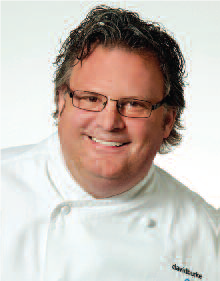 Editor’s Note: David owns David Burke Kitchen, David Burke Townhouse, Fishtail by David Burke and David Burke at Bloomingdales in New York, David Burke Fromagerie in Rumson, David Burke Prime in Connecticut and David Burke’s Primehouse in Chicago. www.davidburke.com
Editor’s Note: David owns David Burke Kitchen, David Burke Townhouse, Fishtail by David Burke and David Burke at Bloomingdales in New York, David Burke Fromagerie in Rumson, David Burke Prime in Connecticut and David Burke’s Primehouse in Chicago. www.davidburke.com